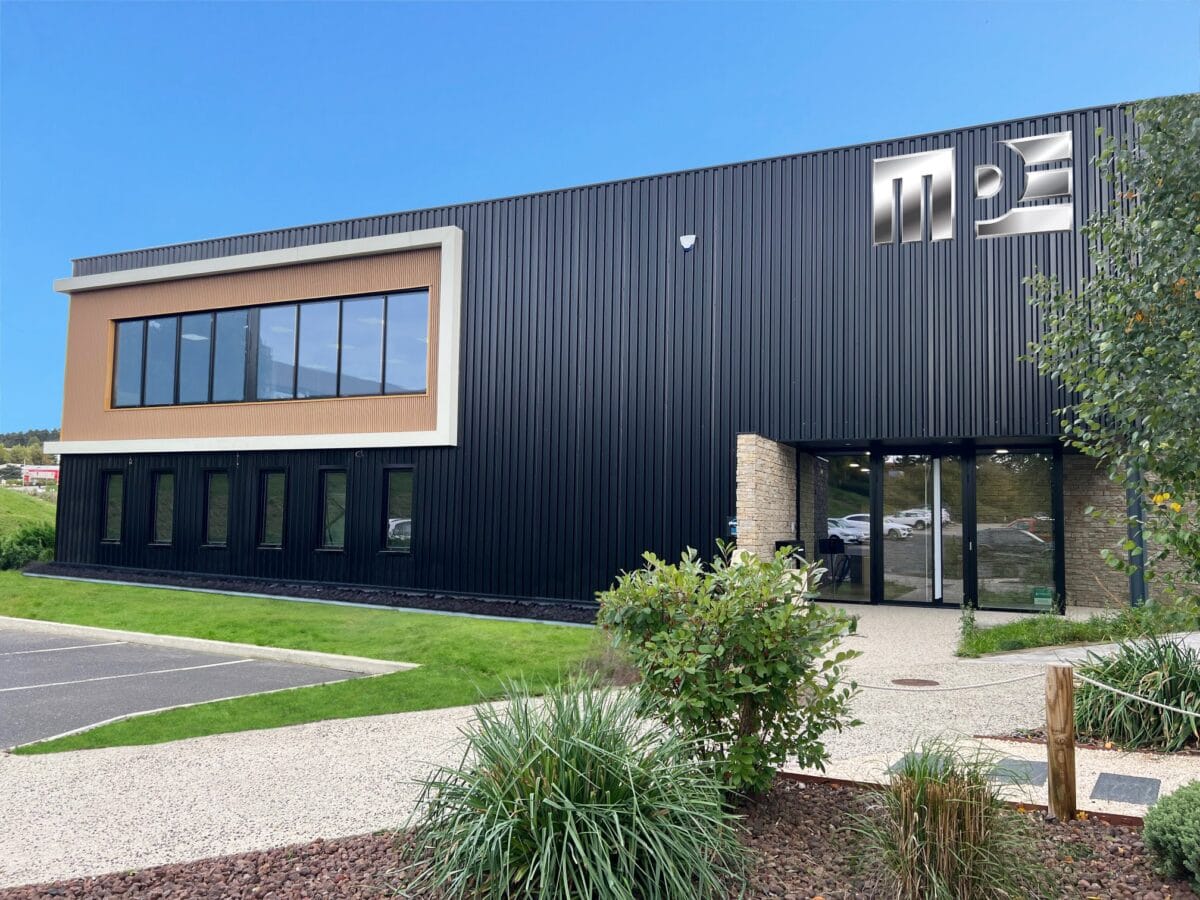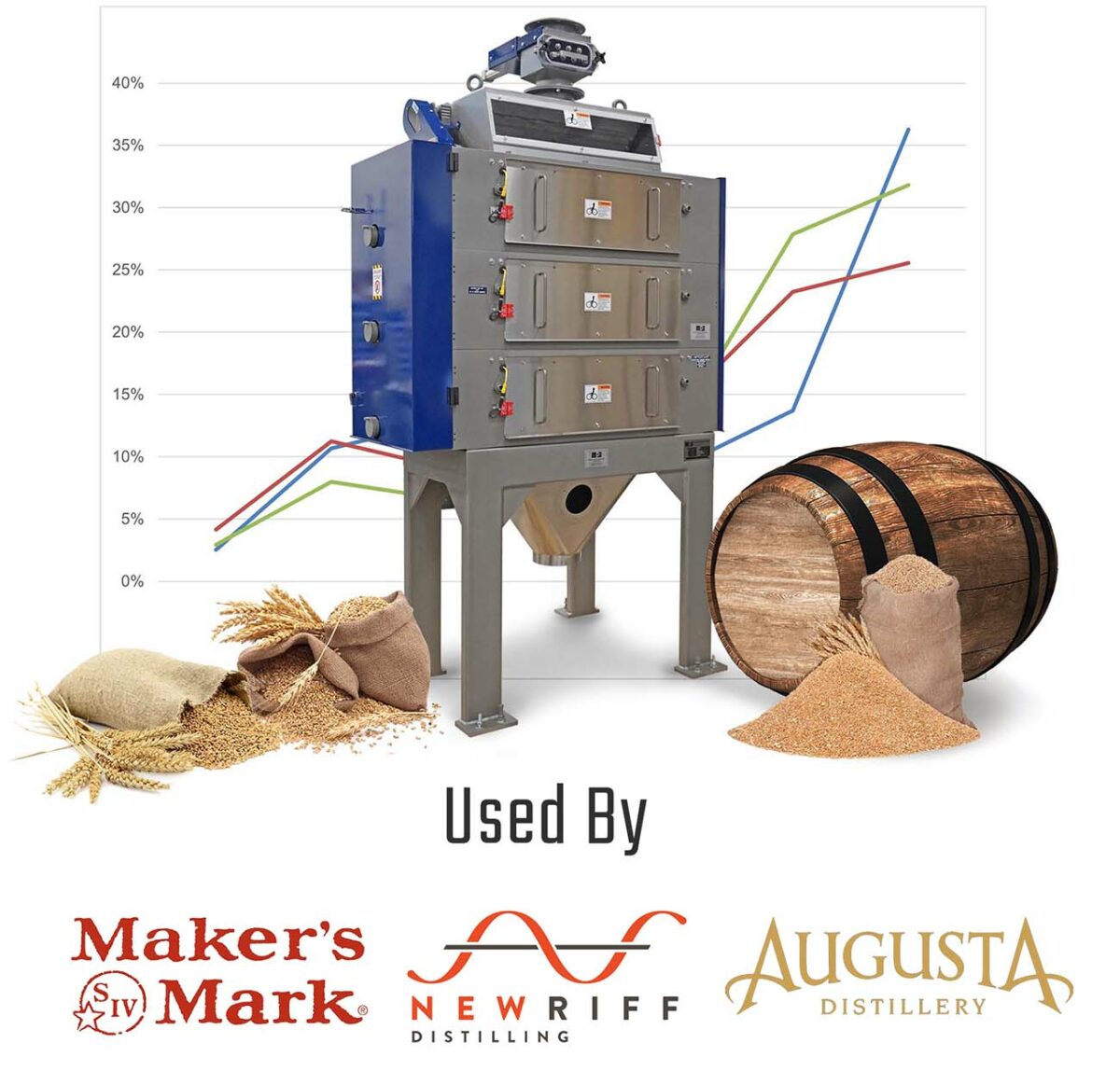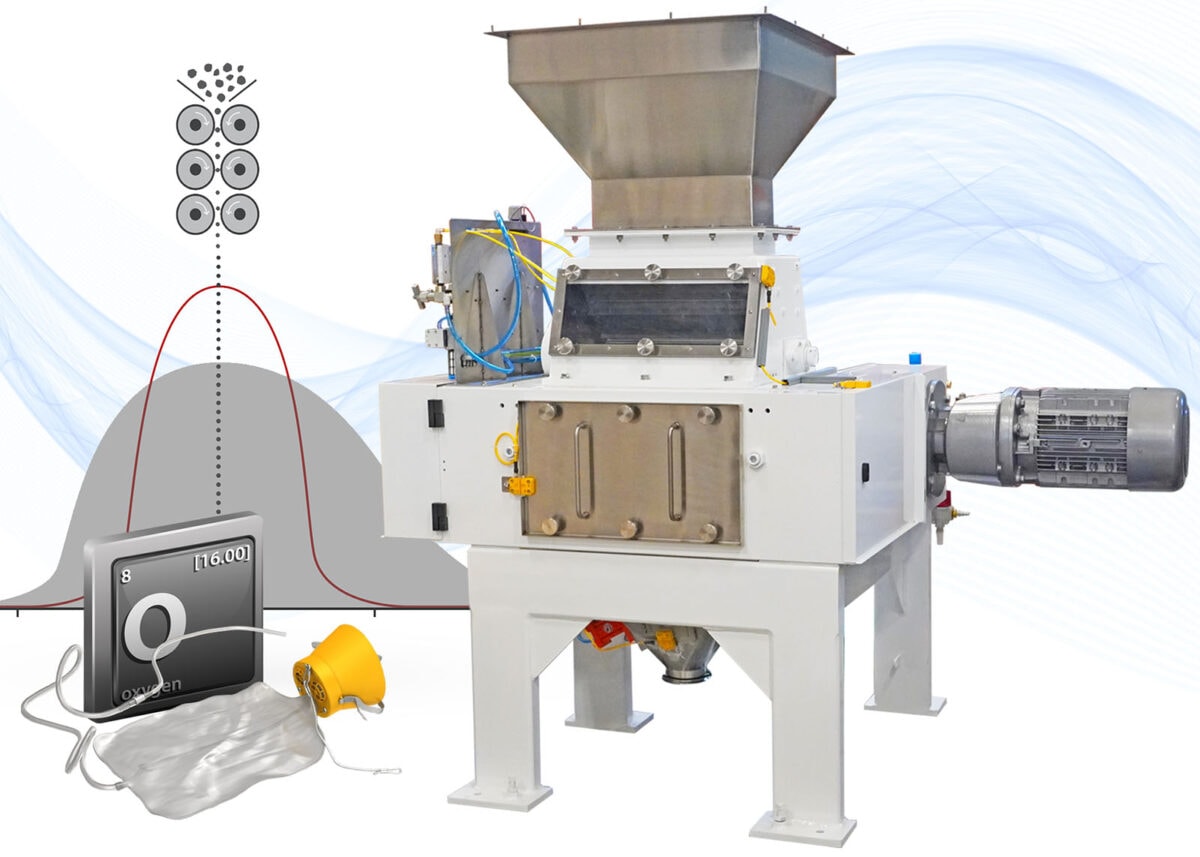It’s a shrinking world: Faster transportation, instant Internet information and immediate communication all combine to make our enormous planet, for all practical purposes, a lot smaller and a lot more demanding than it used to be. In today’s manufacturing world, companies are also demanding a lot more from their processing equipment. More specifically, companies are seeking competitive advantages through improved product characteristics, higher process efficiencies and less energy usage. In terms of particle reduction, the Gran-U-Lizer™ achieves all of these objectives.
Why maximize particle uniformity?
In many particle reduction applications, the most important objective is to maximize particle uniformity. Take, for instance, coffee. In the United States, coffee is typically ground to achieve maximum yield on a 16 x 40 U.S. Mesh (1170 to 590 microns) size range with minimal “fines” (in this case, those particles below 40 Mesh). After grinding, the coffee is not classified; rather, it proceeds directly to packaging. This type of streamlined process demands both precision grind uniformity and ultimate product consistency. If the grind size varies or additional “fines” (or dust) are created, the coffee overextracts during the brew process. This overextraction increases coffee bitterness – a characteristic that all coffee producers try to minimize. In other particle reduction applications, strict particle size requirements must be met and, therefore, product classification is required. When this is the case, “fines” are often thrown away, reprocessed or used in a secondary market. In either case, money is lost and energy is wasted.
Optimal Applications
In general, there are two factors that rule out using the Gran-U-Lizer-style roller Technology for selection as the optimal particle reduction method for any application: (a) The product to be ground is not friable or fragile/breakable… or (b) There is no value to be gained from maintaining a uniform particle size with minimal “fines”. However, if both conditions (a) and (b) above are met, the Gran-U-Lizer will provide superior particle reduction results over any other milling method, particularly in those applications where the desired average particle size range is between 100–1500 microns. The variables at play The Gran-U-Lizer utilizes roller mill technology and adheres to three core principals in order to maintain excellent size distribution. First, the rollers that are used are not typically smooth. They are, in fact, custom corrugated (or grooved) to suit each specific application. There are literally thousands of different corrugations
that might be applied to a given roll. By performing real-world environment lab tests, the best configuration for a given application can be determined. Rolls can be grooved with corrugations that run either along the length of the roll (longitudinal) or around the roll’s circumference (circumferential). Flutes within each corrugation can vary both in terms of shape as well as in size. For example, some products require eight flutes per inch, while others use 30 flutes, depending on variables such as material hardness and specified size. The second important differentiating variable is relative roll speed ratio, or differential roll speed. Running the rolls at the ideal relative speed as the material passes through them will achieve the desired shearing effect. For example, if one roll rotates at 500 RPM and the other 1000 RPM, the relative roll speed is defined at 2:1 (1000/500). The relative roll speed ratio is proportional to the amount of shear placed upon a particle passing through the “nip” point of a roller. The higher the shear, the more tearing the crushed particle receives. Depending on the material properties and roll cuts being utilized, this relationship has a definite impact on the particle size distribution. Third, the operator has the ability to control the product size by widening or narrowing the gap between the rolls. The roll gaps can be adjusted on the fly to alter particle size distributions “on the fly” in seconds, eliminating the need to shut down a continuous process and allowing fast changeover times between various grind settings. The most critical element of this fine-tuning capability is the need to keep the rolls parallel. Perfectly parallel rolls are a cornerstone of this roller mill technology.
Controlled Explosions
Roller technology has evolved and become much more refined over the past 50 years. Some may still think of roller technology in its crudest form, with “crushers” haphazardly pulverizing friable materials down to a reduced size. But today’s Gran-U-Lizer has been designed to produce “controlled explosions” that achieve a completely controlled and highly-engineered particle reduction. Friable materials – basically any materials that can break as opposed to flatten under pressure – can now be reduced in size with less dust, less “fines” and greater uniformity. In fact, when compared with alternative methods of grinding, the finite advantages of this roller mill technology become dramatically clear. For example, compare roller mills with hammermills, or Fitzmills®, which grind by impact at high speeds and rely on a perforated sizing screen to control particle size. Roller mills typically create 50-75% less dust, or “fines”, and improve desired particle uniformity by 50-100%. Plus, since hammermills and other attrition milling methods rely on multiple impacts, they typically require a relatively higher energy usage. Energy savings can be a primary reason to go with roller mills over more traditional methods. In fact, because of their efficient reduction action, roller mill grinders will produce 15-40% more tonnage/ hour, at a given horsepower, than hammermills. Roller mill technology is not necessarily the best technology for every application. If you’re looking to produce very fine grinding with final particles in the 40 micron range, pinmills may be your best option, even though pinmills have some inherent disadvantages including relatively low capacities with fairly high operating and capital costs. But if you’re looking for superior, controlled reduction for distribution targets ranging from 100 to 1,500 microns, and you’re working with friable materials, roller mill technology is your best option.
Growing Markets for Precision Particles
Market demand for precision particles is growing. As companies strive to improve product characteristics, achieve higher process efficiencies and use less energy, the utilized roller mill technologies become ever more important. In general, we see food, chemical, mineral and pharmaceutical companies in continuous demand for particle reduction improvements. More specifically, two markets we have very high expectations for in the next few years are the carbon and super-absorbent industries. As these materials become more commoditized, manufacturing efficiencies and product quality become increasingly important. Regarding carbon, we see a high demand for activated carbon for air and water purification as well as carbon electrolytes, which are used in the steel manufacturing process. The same story is true for super-absorbent materials, which are used in various applications from napkins to agriculture. As the super-absorbent market matures, competition increases and manufacturing efficiencies become progressively more important. Carbon and super-absorbent production are just a couple examples of the thousands of applications that can benefit from this roller mill technology. Basically, if a company is looking to reduce friable particle size, reduce waste and reduce costs, the controlled particle reduction technology of roller mills is increasingly becoming the way to go. While traditional crushers and other imprecise methods are literally gathering dust, roller mills will continue to expand their role in this ever-reducing world.



